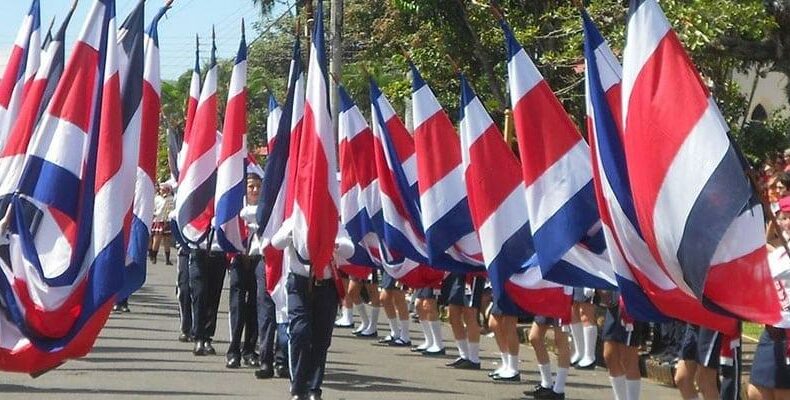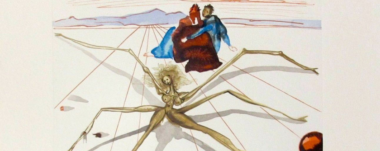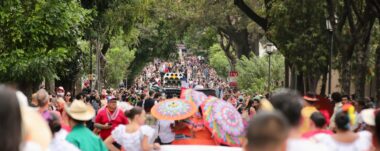Books, laws and guns in Costa Rica

Costa Rica owns a relatively small territory. However, since it took off as an independent state it has trodden the paths of progress seeking to give giant steps. In its 51,500 square kilometers of coastlines, beaches, mountains, valleys, plains and sunshine, peace is felt not only as one of the gifts of Mother Nature, but also in the faces and lives of the little more than 5 million inhabitants who call home to this small expanse.
This country´s great steps can be found in small details that are sources of courage and inspiration, worthy of admiration for any country worldwide. In their definition of a nation, few have managed to include elements such as peace, education and development as this Central American nation.
With a sledgehammer peace was born
In 1949, after a war of brother against brother, the First Founding Council of Costa Rica took on as one of its functions the arduous task of uniting a divided country in order to draft a new constitution, which is still in force. Against this backdrop, one of the most radical decisions that would change Costa Rican idiosyncrasy was made. The abolition of the army would shape the future of Costa Rica as a nation, its public and international policy, among other aspects. With a sledgehammer to a wall of a military barrack, as a symbolic act, the State opted for the abolition of the army. Marking a new vision of not investing in arms, but rather in a population that would grow up surrounded by an air of peace and respect, formed by education in classrooms and not in training bunkers.
Today it is the duty of every person to ask itself how the abolition of an institution such as the army, present in almost every country of the world, excluding only a few, can affect the course of its consolidation and maintenance. In Costa Rica, this event enabled the culture of peace to become the cross-cutting policy that is still reflected in laws guaranteeing human rights, in school curricula and in the actions of every Costa Rican. Not for any other reason, Costa Rica is home to the Inter-American Court of Human Rights and the University for Peace or even lent its name to the American Convention on Human Rights, better known as the “Pact of San José de Costa Rica.”
These are a few examples, but they are rather enough to see the impact of not having an army in this nation means. Another proof would be every September 15th, the date of Independence, when in the streets parades students with flags and drums wearing their school or high school uniforms walk the streets instead of military battalions. The policy of peace reached its highest expression with the promulgation of the Perpetual Neutrality Law and policies that effectively enabled social mobilization.
Education for social empowerment
With education programs that allowed progress, with free and compulsory primary and secondary education and even with a public higher education institution like the University of Costa Rica accessible to anyone who wanted to study, this country widened the ranks of the middle class with economic stability and perpetuated it for several years.
This investment in education and the culture of peace prevented situations that were visible in other Latin American nations during the late 20th and early 21st centuries, such as dictatorships, coups d’état or high-violence crises. For this reason, it is clear that, in the turbulent context of Latin America, Costa Rica was an island of peace in the middle of the sea. This way of life refers to the simple dialectic between culture and laws, as both influence each other in a perpetual way. In other words, this country represents the idea that culture changes the law and the law changes the culture and it is clear in this country that the two are combined.
The investment in a Costa Rican culture based on peace and education sought the idea of abandoning spending on artillery units to investing in educational books. The culture of peace achieved the foundation of a social state based on the rule of law with a conscious and active citizenry. For it can never be denied that education is the best investment a country can bet on and that a right investment can mean a saving for the future of societies.
Decay and uncertainty
Nevertheless, what was once a time of pride, peace, education and development is now in decline. The Costa Rican culture of peace, while remaining in the imaginary collective of the population, risks becoming a position of indifference and conformity.
Education for social mobilization and the promotion of critical analysis got stuck in the typical bureaucracy of developing countries. Education to foster active and participatory citizenship is nothing more than reading legal articles out of context and their absurd repetition. Modern schools became old and unmaintained buildings. Even more dangerous, quality education became accessible to those who can afford private schools, encouraging exclusion.
Even though Costa Rica continues to invest in education; for example, in 2018 it invested 26. 087% of GDP in education, there is a lack of preparation of the population for the Costa Rican reality. Even the State of the Nation Program has acknowledged an attempt to reduce investment in this area because it believes that the“current level of investment per student is sufficient” in the current context. The problems generated by a lack of education have resulted in an over production of laws to alleviate situations that should have been prevented at the right time.
In a span of four years, Costa Rican education has been hit by a three-month strike by the teachers’ union, a pandemic with virtual classes not accessible to all students, a financial crisis that shackles investment, the impossibility of infrastructure improvements that forces the teaching of classes in churches and community halls, the lack of variation and resistance to new education programs that seek to adapt classes to the reality of the country and shrink the great gaps between them both, between a few. All of them have left at least 20,444 young people between 15 and 17 out of class. The number widens when other group ages are included. The country is facing the anguish of seeing a new lost generation, with a violated right to education.
Despite the current uncertainty and poor condition of Costa Rican education, it is not possible to say that the road is lost. At the time, the country had the courage to make a structural change to invest in education. It is now time to regain courage and not only to devise, but also to implement a quality education reform. A reform that is not only reduced to building safe schools for students, but also that includes progressive education on environmental sustainability, technology, active and global citizenship, among other aspects; as well as taking the students´ perspective into account. There is no greater hope than to see that even among the ranks of the students themselves and among the citizens, the will for change continues all in order to aspire with the same paths of greatness.
To remember:
- Costa Rica has not had an army since 1949 and has had a consolidated democracy since then.
- Investment in education and the culture of peace prevented situations such as dictatorships, coups d´état or high-violence crises that were visible in other Latin American nations during the late 20th and early21st centuries.
- Costa Rica urgently needs a comprehensive education reform that will enable it to face the future at the country level.
[1] (Instituto de Estadística de la Organización de las Naciones Unidas para la Educación, la Ciencia y la Cultura ( UNESCO ), 2021).
[2] (Programa Estado de la Nación, 2021)
[3] ENAHO. 2020. Asistencia a educación formal y nivel educativo de la población según zona y región de planificación, julio 2020.
Beatriz González Acuña
Law Student of the Universidad de Costa Rica
Email: [email protected]
Navigate articles






